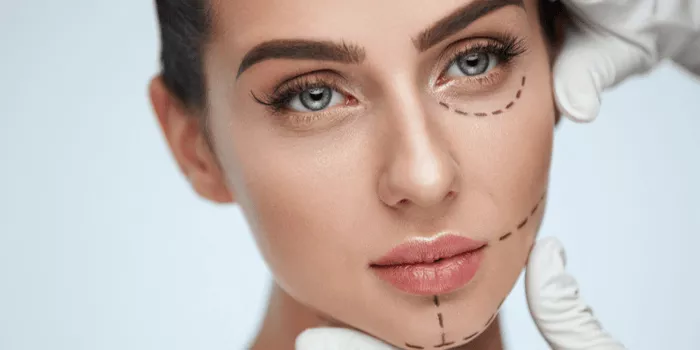Droopy eyelids, medically known as ptosis, can not only affect your appearance but also impact your vision and self-confidence. While surgical procedures like blepharoplasty (eyelid surgery) are often recommended for severe cases of ptosis, there are non-surgical methods that can help address mild to moderate drooping. In this article, we will explore various techniques and lifestyle changes that can help you fix your droopy eyelids without resorting to surgery.
Understanding Ptosis (Droopy Eyelids)
Ptosis is a condition where the upper eyelid droops, partially covering the eye. It can occur in one or both eyes and may be present from birth (congenital ptosis) or develop later in life (acquired ptosis). Common causes include aging, muscle weakness, nerve damage, and certain medical conditions. While severe cases often require surgical intervention, less severe forms of ptosis can often be improved through non-surgical means.
Non-Surgical Methods to Address Droopy Eyelids
Eye Exercises and Eye Yoga:
Blinking Exercises: Regularly blink your eyes quickly for a few seconds to strengthen the levator muscles responsible for lifting the eyelids.
Eyelid Lift Exercise: Gently place your index fingers at the outer corners of your eyes and apply light upward pressure while trying to close your eyes. This exercise can help tone the eyelid muscles.
Warm Compresses:
Apply warm compresses to your eyelids for 5-10 minutes daily. This can help relax the muscles and improve eyelid elasticity.
Eye Drops:
Some over-the-counter eye drops can temporarily lift the eyelids by constricting the blood vessels and reducing puffiness. However, this effect is often temporary.
Topical Creams and Serums:
Certain eye creams and serums contain ingredients like caffeine and peptides that may temporarily tighten the skin around the eyes, reducing the appearance of drooping.
Cosmetic Solutions:
Makeup techniques, such as using eyeshadow and eyeliner to create the illusion of a lifted eyelid, can help improve the appearance of droopy eyelids.
Proper Eyelid Care:
Be gentle when cleansing your eyelids, as excessive rubbing can worsen ptosis. Use a mild, hypoallergenic cleanser to avoid irritation.
Stay Hydrated and Get Adequate Sleep:
Dehydration and lack of sleep can exacerbate puffiness and make droopy eyelids appear more pronounced. Ensure you are well-hydrated and aim for 7-9 hours of quality sleep per night.
Eye Protection:
Wear sunglasses with UV protection to shield your eyes from the sun’s harmful rays, which can contribute to skin aging and ptosis.
Limit Eye Strain:
Reduce prolonged screen time, take regular breaks, and ensure proper lighting when reading or using electronic devices to prevent excessive eye strain.
Consult a Specialist:
Schedule an appointment with an optometrist or ophthalmologist to rule out any underlying medical conditions contributing to ptosis. They can provide guidance on appropriate non-surgical treatments.
Temporary vs. Long-Term Solutions
It’s essential to understand that non-surgical methods may provide temporary relief from droopy eyelids but may not offer a permanent solution. Their effectiveness can vary from person to person, depending on the severity of ptosis and individual factors.
If non-surgical methods do not yield satisfactory results or if ptosis significantly affects your vision, surgical correction may be necessary. Blepharoplasty, a common eyelid surgery, involves the removal or repositioning of excess skin, muscle, or fat to lift and rejuvenate the eyelids. Consultation with an experienced ophthalmologist or oculoplastic surgeon can help determine the most suitable treatment approach for your specific case.
Conclusion
Droopy eyelids, or ptosis, can be a frustrating condition, affecting both appearance and vision. While non-surgical methods can provide temporary relief and improve the appearance of mild to moderate ptosis, they may not offer a permanent solution. Consulting with a healthcare professional is essential to determine the underlying cause of ptosis and to explore appropriate treatment options.
Whether you choose non-surgical methods, consider surgical correction, or opt for a combination of both, addressing droopy eyelids can significantly enhance your appearance and overall well-being. Remember that the effectiveness of non-surgical treatments varies, so consult with a specialist to determine the most suitable approach for your unique needs and desired outcomes.


